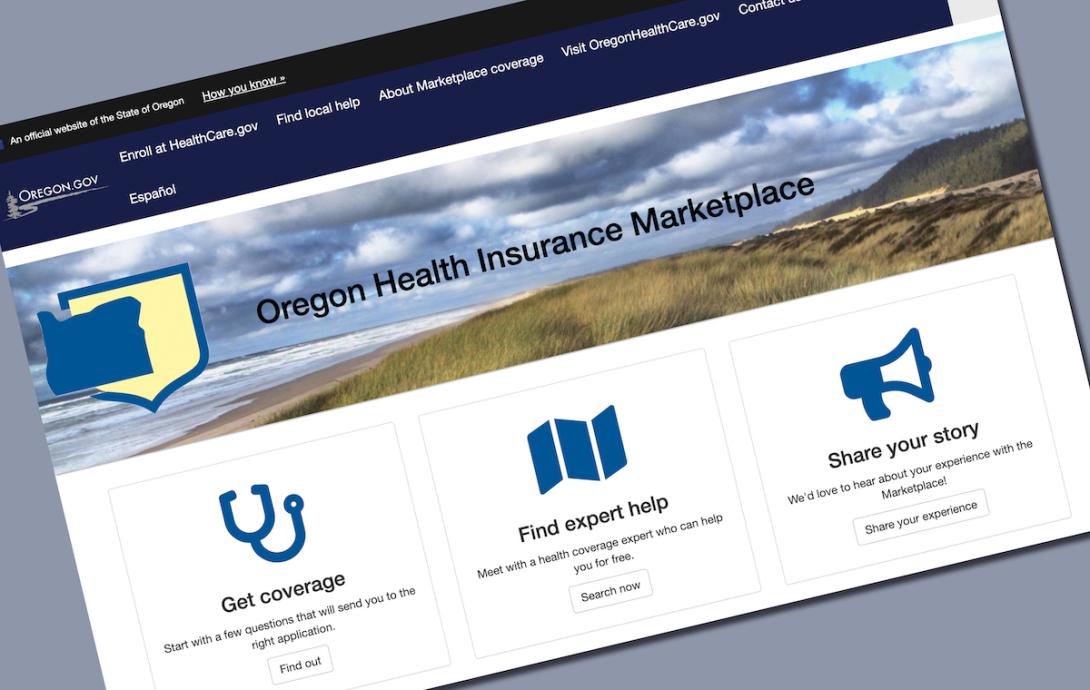
Open enrollment period kicked off Wednesday for about 160,000 Oregonians who buy their own health insurance and are not on Medicare. And changes are afoot, with more financial aid available and more people expected to shop for insurance after losing a low-income health plan.
The period runs through Jan. 16 and gives Oregonians the chance to shop for coverage through the Oregon Health Insurance Marketplace, a state portal that connects individuals to health insurance and potential federal subsidies to help pay for it.
To ensure their coverage kicks in by Jan. 1, Oregonians should sign up for a plan by Dec. 15.
Open enrollment in what’s known as the individual market changed in 2013 when a key provision of the federal Affordable Care Act went into effect. The marketplace is intended to help independent contractors or self-employed individuals, as well as workers whose employers offer inadequate coverage or none at all.
This year’s enrollment period comes as the Oregon Health Authority continues reviewing the eligibility of 1.5 million Oregonians on the Medicaid-funded Oregon Health Plan after a pause during the pandemic. So far, state officials have reviewed the eligibility of over half the people on the program and deemed over 80% of people eligible to keep their coverage.
“We know that there are a lot of people who are no longer eligible for OHP and shopping for coverage for the first time,” Amy Coven, stakeholder and communications analyst at Oregon Health Insurance Marketplace, told The Lund Report.
She said that around 55,000 people statewide are expected to be looking for coverage after losing Oregon Health Plan coverage.
Chiqui Flowers, director of the Oregon Health Insurance Marketplace, said in a statement that the marketplace is “able to offer more financial assistance than ever before and our partners can help Oregonians determine what assistance they qualify for.”
That additional assistance comes from federal Coronavirus pandemic relief funds as well as from the more recently passed Inflation Reduction Act, which increases subsidies for people purchasing their own insurance through the marketplace.
Coven said the additional subsidies will particularly help older consumers who didn’t qualify for help because they earned too much. Now, there’s essentially no upper income limit to qualify for financial assistance, she said.
“We are seeing more people getting help than before, and the people who are getting help are getting a little bit more than they have in the past,” she said.
Roughly 142,000 Oregonians used the marketplace last year to enroll in coverage for 2023, about 80% of whom received tax credits to pay for premiums, according to a state report. The average premium tax credit was $503 per person per month and those that received them had an average monthly premium of $224.
Nearly 147,000 people enrolled the previous year, also with about 80% receiving financial assistance that averaged $489 per person per month.
Also notable this year: Oregonians will see significant price hikes for some plans. Earlier this year, regulators signed off on average price hikes in the individual market that ranged from PacificSource Health Plans’ 3.5% increase to Providence Health Plan’s 8.5% increase. Those increases vary depending on factors such as the consumer’s age and plan.
“As the premiums increase, assuming that someone’s income hasn’t also increased, they’ll just get more financial help to make that plan affordable,” Coven said.
Coven said that every Oregonian shopping for health insurance will have at least five companies to choose from. Additionally, Providence has expanded its Signature Network statewide and Moda has reentered Deschutes County with 11 Affinity Network plans.
Each of the available plans is designed to cover emergency services, preventative services, behavioral health and others. Oregonians shopping for plans can get free in-person or online support from the Oregon Health Insurance Marketplace,
“A lot of people don’t realize there’s a lot of services that are covered by health plans in Oregon,” Coven said. “If people get non-traditional services — like naturopathic, acupuncture or chiropractic care — those are covered by health plans on the marketplace.”
Coven said that all of the marketplace’s standard plans offer three office visits to a primary care physician, as well as behavioral health or mental health services for $5 even if the patient hasn’t met their deductible.
Some Oregonians bypass the state portal entirely, though by doing so they give up on the possibility of subsidies. Last year, about 35,000 Oregonians did that, buying directly from the insurer instead. In addition to the help available through the marketplace, some health insurance agents and brokers also help individual consumers find the right plan for them.
While the marketplace’s online portal categorizes coverage of different levels and includes rates for purposes of comparison, with labels like bronze, silver and gold, that information doesn’t necessarily lead to the best choice for individuals. Experts urge consumers to do more research to make sure specific plans include their providers in their network and cover their needed medications.
The Oregon Health Insurance Marketplace is essentially a workaround, both a unit of the Oregon Health Authority and a portal set up to the federal marketplace called HealthCare.gov that Oregon pays to be able to use. The state had tried to build its own version of the marketplace a decade ago, but failed at a cost of more than $300 million, leading to the new portal. The state is moving toward purchasing its own system again, saying other states and new off-the-shelf systems prove it can be done.